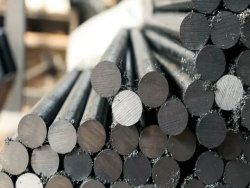It was a man-made disaster caused by mining. Every copper wire in your home, the steel frame of an electric car, and any modern appliance is the result of the mining industry.
The mining industry leaves behind waste in the form of tailings stored in dams and ponds around the world. This infographic shows the estimated size of one of the pieces of this waste, the tailings, displayed against the backdrop of a panorama of New York City as a landmark.
Quantitative assessment of the material impact of the mining industry
A total of 1,743 unique sites containing 44,540,000,000 m3 of tailings were tracked as part of the Global Tailings Survey. This data set covers only 30.2% of the world's commercial production.
However, according to the estimates presented in the review, the total number of active, inactive and closed facilities is about 8,500. If we use the assumptions made for estimating 1,743 objects to calculate 8,500 objects, then the total volume of tails stored worldwide will be 217,330,652,000 m3.
What are tails?
Not all rock extracted from the ground contains metal. Miners find, extract, and refine rocks containing small amounts of the metal we need.
Just over 10 billion tons of ore were extracted from 72 billion tons of minerals. Only 14% of the extracted material is processed into metals.
Tails are what remains after the separation of metal from the extracted rock in factories. The recycled material (tailings) comes from the tail section of the mining factory and consists of fine particles mixed with water and forming a pulp. Mining companies store this waste in dams or ponds.
Mineral % contribution to global tailings ponds
Copper 46%
Gold 21%
Iron 9%
Coal 8%
Phosphate 4%
Lead and zinc 3%
Nickel 2%
Platinum group elements 1%
Bauxite 1%
Uranium 1%
A growing understanding of the true value of the mining industry will force companies to minimize and maximize their waste.
For example, Rio Tinto extracted borates from a mine in the Mojave Desert, where tailings have formed for more than 90 years. The company examined these tailings for gold and found lithium in concentrations higher than those of other mines under development.






